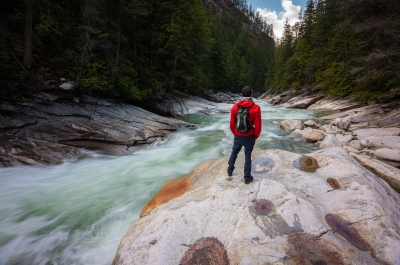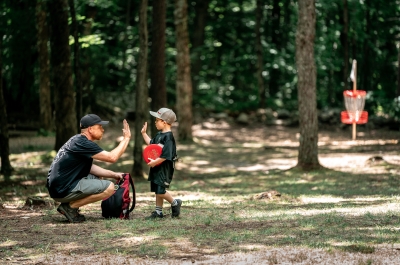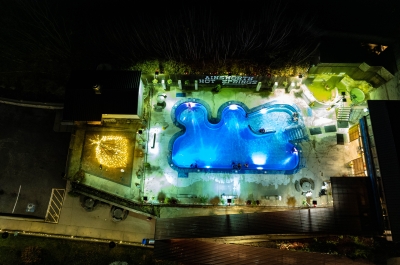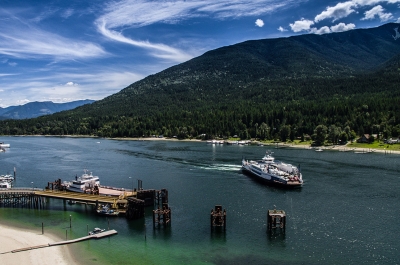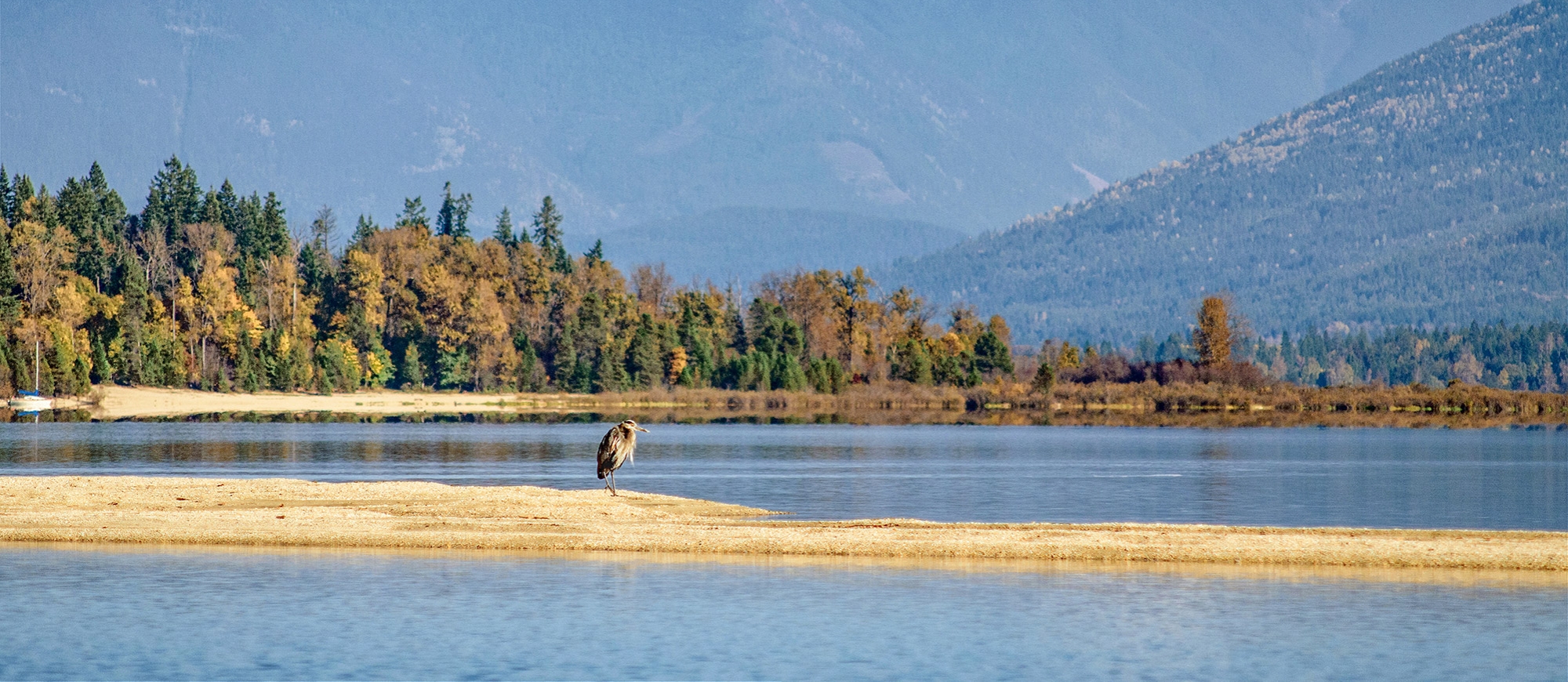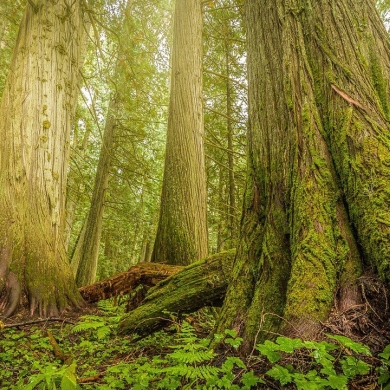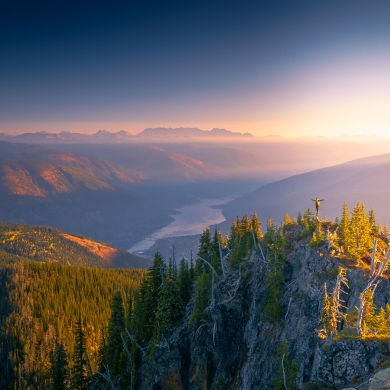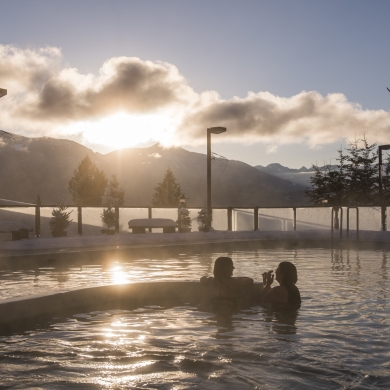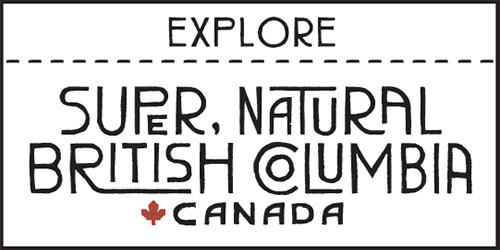Birding
Kootenay Lake: A Birdwatcher’s Treasure
Birdwatching, or birding for short, is one of Nelson and Kootenay Lake Region’s most under-rated pastimes. While nature-viewing in other popular locales often involves dealing with crowds, here you will be lucky to run into another person with whom you can share your recent sightings and tales. Yet many birders—young and old—are now discovering the region’s hotspots that allow both common and elusive species alike to be brought into focus.
Watch "A Rare Bird", the fifth short film in Our Place series featuring Gaelen Schnare, a fourteen-year-old birder, wildlife photographer and outdoor enthusiast.
Over two hundred species regularly occur here throughout the year, including such beauties as Calliope, Rufous and Black-chinned Hummingbirds, Western Grebe, Northern Pygmy-Owl, Western and Mountain Bluebirds and of course the majestic Osprey. Indeed, Kootenay Lake hosts the world’s highest nesting density of this charismatic raptor! With fourteen provincial parks to explore across two major mountain ranges and a multitude of wetland sites, there is an abundance of birds and other wildlife to encounter. This regional map, and International Selkirk Loop birding map of the area can help plan your adventure, but here are some of the hotspots:
Nelson
Walking the paved, accessible paths of Nelson’s waterfront from the Big Orange Bridge downstream to the old transfer station will reward birders with an array of waterfowl, including Redhead, Bufflehead and up to three species of Merganser. Cliff Swallows love the old boat houses while Willow Flycatcher, Yellow Warbler and Cedar Waxwing nest in the willows near the shoreline. In early spring, American Dipper can be found nesting at nearby Cottonwood Falls, while later on, the song of the Pacific-Slope Flycatcher rings out from the town’s uphill greenery. If you’re looking for mountain species, head all the way up to Whitewater Ski Resort and spot Townsend’s Warbler, Gray Jay, Mountain and Boreal Chickadees, Fox Sparrow and others. The new BirdQueen trail offers a brisk hike to the subalpine where scanning for raptors (including the majestic Golden Eagle) might be a solid bet for a good hoot. Whitewater also hosts two sought-after owls: Boreal and Northern Hawk-Owl. Listen for the former in November and March and watch for the latter during the winter months.
Duck Lake
At the south end of Kootenay Lake, the shallow and productive Duck Lake is one of the top birdwatching hotspots in Western Canada. Part of the RAMSAR-designated wetland complex of the Creston Valley Wildlife Management Area, this large water body offers the region’s best shorebird and waterfowl viewing, bar-none. In spring through fall the lake plays host to tens of thousands of migrant waterbirds including Canvasback, Common Goldeneye, American Avocet, Black-necked Stilt, American White Pelican, three species of teal and one of the few nesting colonies of Western Grebe in the province. Rare grassland species such as American Bittern and Short-eared Owl are elusive but possible. This area is British Columbia’s only nesting site for the gorgeous Forster’s Tern, but similar species including Black, Common and Caspian Tern also appear. Duck Lake’s southern shoreline includes the only significant mudflats within hundreds of kilometres, making them a must-visit during shorebird migration (May and September are best). Nearby Channel Road is a great place to find Wood Duck and Blue Jay. Bring mosquito repellent in June and July! While in the area or doing the entire loop, don’t forget to check out the open waters at the south end of Kootenay Lake - from a spectacular roadside pull-out viewers can observe loons, gulls and eagles from an unmatched vantage.
East Shore
Continuing north along the shore of Kootenay Lake, after an hour (or several hours at the birder’s pace) one will encounter the Crawford Bay Wetlands offering 62 hectares of birding delight. This area offers a good overview of the valley-bottom species occurring in the Kootenay Lake area. Mountain Bluebird, Violet-green Swallow, Western Tanager and Yellow-headed Blackbird might be the most picturesque of the bunch, but surprises such as Lewis’ Woodpecker and Bobolink could show up at any time. Head to the Crawford Bay Visitor Centre to pick up some trail maps and seasonal information on one of the many hiking trails in the area. Wandering the Peninsula Shoreline Trail and visiting the historic Pilot Bay lighthouse is a worthwhile outing. Another option is to rent a canoe or kayak from the Kokanee Springs Golf Resort and depart from Crawford Bay Beach to travel the waterways, being aware of changing wind and waves. In this area you will encounter few other birders so the discoveries will be all your own!
Balfour & Harrop
Home to the Kootenay Lake ferry near the entrance to the lake’s famous West Arm, Balfour is a launching point for those heading to/from the East Shore. From anywhere on the shoreline or while grabbing a beer and some snacks on the Dock ‘N’ Duck restaurant patio, one can likely see an Osprey nest with an attending parent bringing in a fishy treat. Queens Bay is a great place to scope for grebes—especially Horned Grebe, which winters in the area but is more exciting once in their breeding plumage (April-May). To the west, Harrop is a short crossing on the 3 minute Harrop-Procter ferry where visitors can explore Sunshine Bay Regional Park. This is an excellent site with a patchwork of fields that are good for Vesper Sparrow, Western Meadowlark, American Kestrel, Black-billed Magpie, and other goodies. Scan out to exposed shoals at lower water levels to find loafing ducks and gulls. Anything is possible in this under-visited site, especially during spring and fall, due to a pinch in the valley that may funnel migrants. Nearby, explore the recently restored Harrop wetlands, key habitat for blue-listed species including the great blue heron.
Kokanee Creek and Glacier
Kokanee Creek Provincial Park is a camper’s paradise and is famous for the run of its namesake Kokanee salmon in August and September. Stop in to view these colourful fish as they spawn in the augmented channel next to the creek, and the myriad of bird species arriving to feast on fish and eggs (eagles, mergansers, gulls, and even mallards). In the vicinity, birders can find woodland species such as Cassin’s Vireo, Hammond’s Flycatcher, MacGillivray’s Warbler, American Redstart, Black-headed Grosbeak and Ruby-crowned Kinglet. The Kokanee Creek Nature Centre has a naturalist on duty and hosts seminars, hikes and evening events. Recent sightings are posted online. Way upstream in the mountains, Kokanee Glacier Provincial Park offers a multitude of hiking and walking trails to view a variety of birds. This hugely picturesque area is popular in the summer months but requires a rough drive up the Kokanee access road. The old-growth forest trail twenty minutes up the road is a worthwhile hike, where towering cedar trees combined with singing Pacific Wren and Varied Thrush make for a true rainforest experience. A quick hike around Gibson Lake can produce Barrow’s Goldeneye, Sharp-shinned Hawk, Dusky and Spruce Grouse, Olive-sided Flycatcher, Hermit Thrush and Fox Sparrow, while a longer march up to Kokanee Lake and beyond into the alpine might produce Gray-crowned Rosy-Finch, American Pipit and White-tailed Ptarmigan. A day hike above the treeline to find these species is rewarding but requires fitness and preparedness.
Kaslo and North Kootenay Lake
Lardeau is a quaint community that juts out into the north end of Kootenay Lake. As such, it provides a distinct habitat from the surrounding forests and attracts birds moving up the lake during migration. Some interesting species have occurred here over the years and it is a worthwhile stop, especially in spring or fall. Nearby Davis Creek and Lost Ledge offer excellent camping as part of Kootenay Lake Provincial Park. A few kilometres to the north, birders will find a thick patch of old-growth riparian forest protected by The Nature Trust where the colourful Magnolia Warbler can be found breeding. Also in these woods are Least Flycatcher, Northern Waterthrush, Great Horned Owl, Red-naped Sapsucker and Veery. Peregrine Falcons are often sighted along the more than 200 kilometres of Kootenay Lake’s shoreline, but the north end is the best place to find them.
Kaslo is always a place to settle in, relax and admire the water-fowl along the shores of Kootenay Lake and in the many tributaries that make it a delight for birders pretty much any time of year. The River Trail is home to nesting birds that find food and protection amongst the old growth and new growth. It's a cacophony of sounds if you just sit, wait, and listen.
Upcoming Events for 2023
- Creston Valley Bird Festival, May 12-14
- Global Big Day, May 13
- World Migratory Bird Day, May 13 & October 14
The Region
TRAVEL BOOK
Read our visitors guide online or order a copy of the official visitor's guide and map for our region.

